Well the snow finally arrived this January and the birds are very active at feeders and bird baths! Recently I've been asked a lot about how birds find water during the cold winter months. The answer is they get their water in one of two ways during the winter:
- They drink water from open sources
- They eat snow and drink water from icicles
Open Sources
Birds seek out open sources of water in the winter. As most lakes and large rivers freeze, open water is instead found at small brooks, streams and smaller rivers that move quickly or just enough so that part of it remains open. They will also use heated birdbaths (yes such things do exist!). Heated birdbaths keep water open in a bath when temperatures drop below 0
°C. While they will bathe in temperatures below zero they will very rarely bathe when it is really cold. Mostly open water sources provide a place for birds to drink water. A few years ago I was doing the Christmas Bird Count in Toronto on a very cold day. We found a small patch of open water by a stream and lo and behold there were 5
Eastern Bluebirds hanging out right above the water in a shrub!
I am noticing lots of activity at my heated birdbath right now. The birds I see most often at the bath are
American Goldfinches,
Pine Siskins,
Mourning Doves,
Black-capped Chickadees,
White-breasted Nuthatches,
House Finches and
Downy Woodpeckers. My Eastern Gray Squirrels and Red Squirrels also enjoy a drink here and there. It helps that in the warmer months the same spot houses a regular birdbath as well, so the birds are accustomed to water there year round.
One of the big advantages to a heated birdbath in the winter is you see a greater variety of birds because all birds need water, so you have the opportunity to view birds that may not visit your feeders. For example
American Robins,
Northern Flickers and
Northern Mockingbirds all enjoy birdbaths in the winter, but rarely visit feeders.
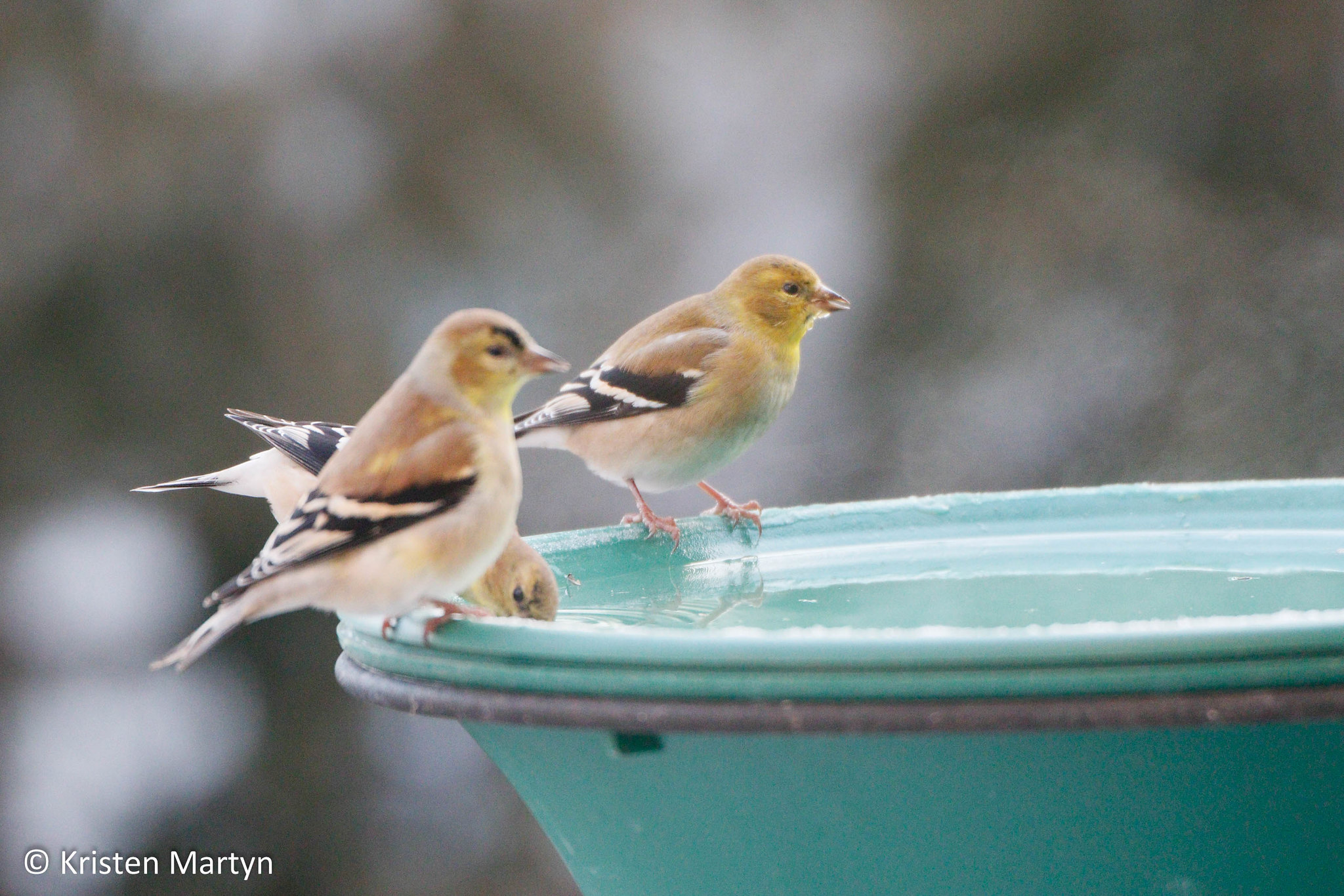 |
| American Goldfinches at a Heated Birdbath |
 |
| Pine Siskin drinking from a Heated Birdbath |
|
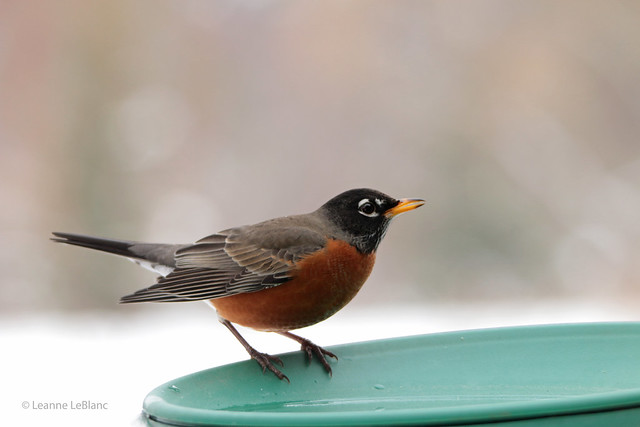 |
| American Robin drinking from a Heated Birdbath |
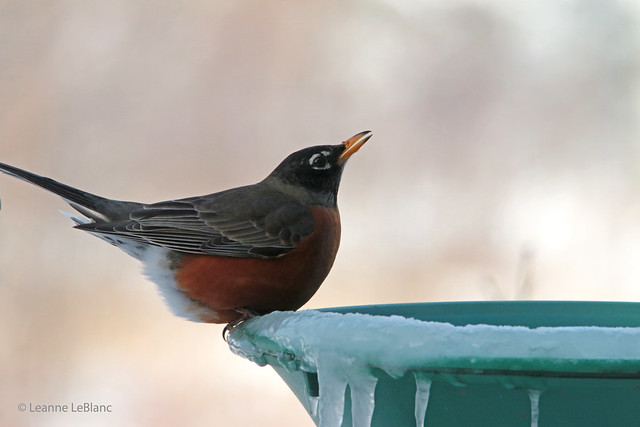 |
| American Robin drinking from a Heated Birdbath |
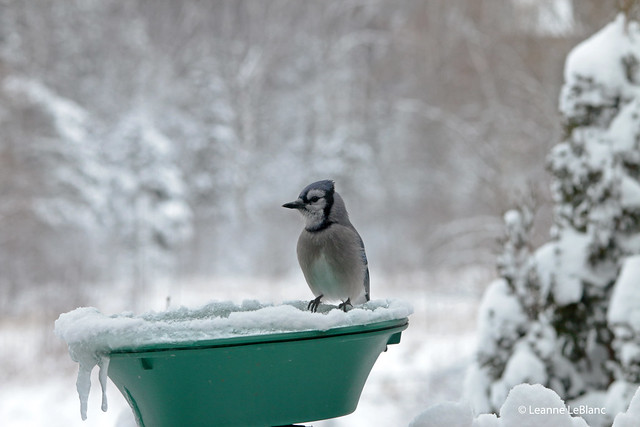 |
| Blue Jay drinking from a Heated Birdbath |
Eating Snow
When open water is not available or in short supply in a habitat, birds will get their water by eating snow or drinking water from icicles. Some species have adapted to eating snow and will rarely seek out open sources of water. For example I have yet to observed
Common Redpolls using my heated bird bath. I see them eating snow all the time, and as a northern species snow play a major role in their life history. They sleep in snow by making tunnels to roost in and they also rely on snow for their source of water. I have also noticed that
American Tree Sparrows are reluctant to visit my heated bird bath, instead preferring to eat snow. Eating snow requires much more energy for birds than drinking water as the birds body has to melt the snow and replace the lost heat. I also recently heard that snow traps emissions from cars and other pollutants from the air and surrounding environment...yuck!
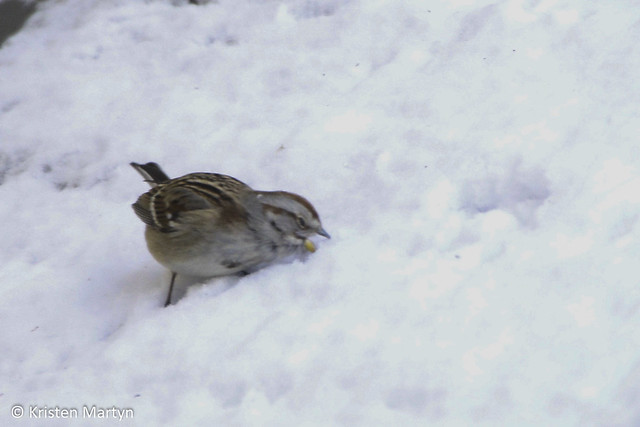 |
American Tree Sparrow eating snow
|
 |
| American Tree Sparrow after eating snow (beak full of snow) |
 |
| American Tree Sparrow eating snow (beak full of snow) |
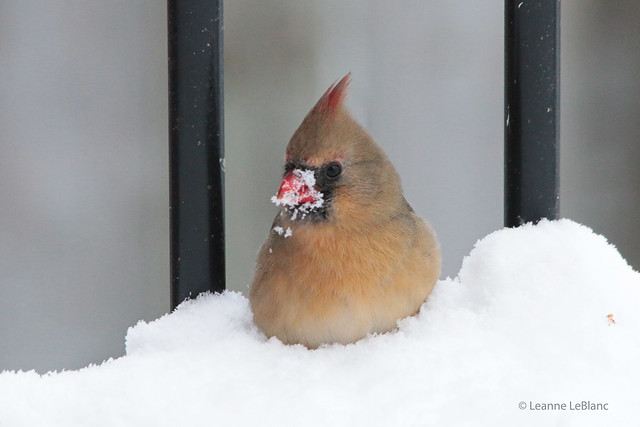 |
| Northern Cardinal after eating a big clump of snow |
 |
| Northern Cardinal after eating a big clump of snow |
Most birds prefer open water if they can find it during the winter and others are quite content to eat snow. Either way birds need a source of water in the winter and it's always neat to observe their behaviour at birdbaths and eating snow!
Happy birding!
~Kristen


























No comments:
Post a Comment